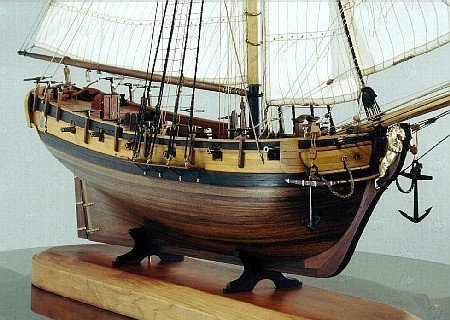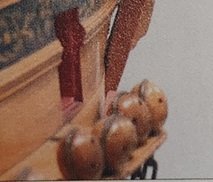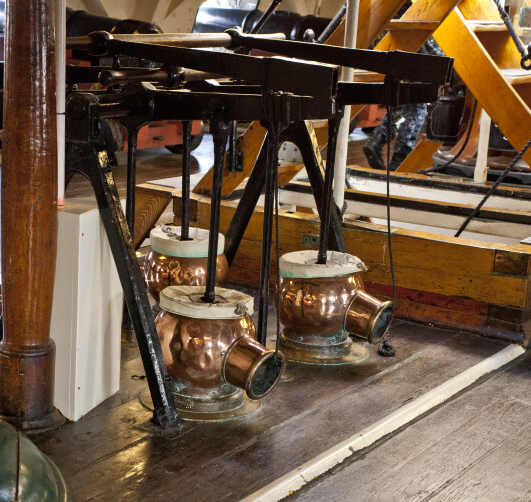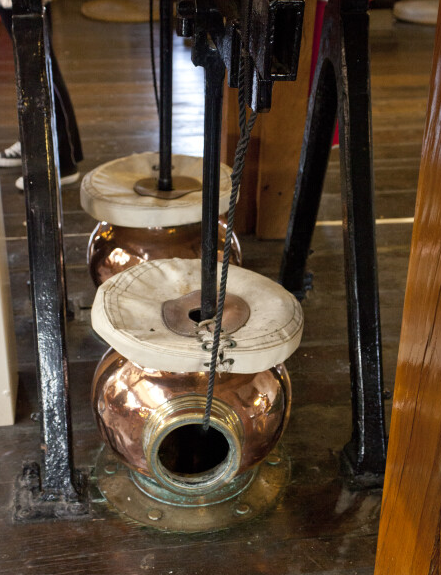-
Posts
3,135 -
Joined
-
Last visited
Content Type
Profiles
Forums
Gallery
Events
Everything posted by Gregory
-
Do you want to 'draw' or will scribing work. How long is the strip? Which dimension do you want to draw on? There are several things to consider if I were trying to do this. What are the shortcomings of the tools you have been shown so far? I can understand that the larger tools would not work well for small thin strips. Obviously, the rotary type markers will not determine the center automatically. If it were me, I would use my proportional dividers to mark the center.
-
Not sure if the smallest in this set would work for you, but it should be easy to make something that uses the same principle. EZ Center Finder Edit: I see Kauz' tool works on the same principle.
-
We know that, but lot's of beginners want to build Victory or Constitution because the look of the sails and all of those guns is what they want over their fireplace. Most of them never come to MSW for our sage advice. They don't want to spend 10 years learning how to build ship models and finally realizing " why did I ever think that kit was a good idea ? " .
-
I misunderstood the OP which said "prime "..
-
Watch it with a free 30 day trial..
-
Blades for Artesania Latina Cutter
Gregory replied to brunnels's topic in Modeling tools and Workshop Equipment
They have these at Cornwall Model boats You might be surprised how low the shipping can be. Very competitive with cost from someplace like Micromark or ModelExpo. Ages of Sail has what looks like the same thing for a different tool. You would have to check the dimensions. -
Because developing a totally new kit is very costly? Put a bunch of old parts in a new box and see who bites.. You might make enough money to develop a new kit.
-
That does look like a very nice kit, with a lot of detail due to the new techology available such as laser cutting and PE. However , I would really like to see some more realistic columns instead of those generic balusters that have been around for 40 years and part of innumerable kits from any number of kit manufacturers.
-
Dead. Deadeyes.. I guess we're still on topic..😁
-
It's really hard to see the vise in your image and how it might integrate with the drill press we are discussing.
-
Here is a video of a very small drilling operation. Drilling.mp4 This is a little block of boxwood. It is very dense and hard. Note that the slight motion you see is the the camera moving. Looking at the spindle in relation to the background shows how stable it is.
-
I don't think it should be. It's a good place to share experience and ideas about machines of comparable size. It might be a good idea to limit it to these " mini " machines, and not try to compare performance to machines that are much bigger.
-
I'm reading through the book " Legacy of a Ship Model " by Rob Napier . Something I noticed, and have seen on other contemporary models, is that the deadeyes are almost spherical . Does anyone know if this was just a modeling convention, or if actual practice ever consisted of deadeyes shaped like this?
-
What would you have me do to determine if this machine is adequate for the work I plan to do?
-
I have not detected any play in the head at all. The chuck is as finally made as any I have seen. I am not interested in investing anymore to make this a "better " machine. I could have paid a lot more and got a lot less.
-
USS Constitution by mtbediz - 1:76
Gregory replied to mtbediz's topic in - Build logs for subjects built 1751 - 1800
You may have this picture but it shows a little more detail. It looks like some copper vessels that allowed for a larger volume of liquid to be discharged as opposed to just the diameter of the main pump body. Another view. This appears to be a different set of pumps consisting of two pumps.
About us
Modelshipworld - Advancing Ship Modeling through Research
SSL Secured
Your security is important for us so this Website is SSL-Secured
NRG Mailing Address
Nautical Research Guild
237 South Lincoln Street
Westmont IL, 60559-1917
Model Ship World ® and the MSW logo are Registered Trademarks, and belong to the Nautical Research Guild (United States Patent and Trademark Office: No. 6,929,264 & No. 6,929,274, registered Dec. 20, 2022)
Helpful Links
About the NRG
If you enjoy building ship models that are historically accurate as well as beautiful, then The Nautical Research Guild (NRG) is just right for you.
The Guild is a non-profit educational organization whose mission is to “Advance Ship Modeling Through Research”. We provide support to our members in their efforts to raise the quality of their model ships.
The Nautical Research Guild has published our world-renowned quarterly magazine, The Nautical Research Journal, since 1955. The pages of the Journal are full of articles by accomplished ship modelers who show you how they create those exquisite details on their models, and by maritime historians who show you the correct details to build. The Journal is available in both print and digital editions. Go to the NRG web site (www.thenrg.org) to download a complimentary digital copy of the Journal. The NRG also publishes plan sets, books and compilations of back issues of the Journal and the former Ships in Scale and Model Ship Builder magazines.








